Solid Waste Generation and Disposal Using Machine Learning Approaches: A Survey of Solutions and Challenges
Abstract
:1. Introduction
- Fruit and vegetable waste;
- Tins, glass, bottles, and plastic bags/containers of waste;
- Paper waste, including newspapers, magazines, etc.;
- Batteries, old medicines, and other hazardous materials such as used oil/kerosene.
- A detailed analysis related to machine learning and artificial intelligence approaches that assist solid waste disposal and generation activities was presented;
- The survey also focuses on ascertaining factors deemed crucial by researchers to forecast the waste generation and disposal behavior and attitudes of citizens in urban cities;
- We have highlighted significant issues/challenges encountered during the prediction of waste disposal behavior and patterns;
- A comprehensive data collection, extraction, and analysis strategy was devised to filter out the most relevant studies in the field of research;
- Implications and limitations of our survey were also detailed to assist the keen researchers transparently.
2. Related Works
2.1. Smart Waste Management
2.2. Advantages of Waste Disposal Solutions
2.3. Waste Disposal Behaviors and Attitudes
2.4. Waste Management during COVID-19
2.5. Existing Surveys
3. Methodology of Our Literature Survey
3.1. Motivating Research Questions
- Research Question One (RQ1): What are the most used machine learning approaches and algorithms developed to optimize solid waste disposal and generation activities?
- Research Question Two (RQ2): What independent variables (features) are used to forecast the waste disposal behavior and attitudes of citizens and urban cities?
- Research Question Three (RQ3): What are the major issues/challenges encountered during the prediction of waste disposal behavior and patterns?
3.2. Search Strategy
3.3. Search Process and Inclusion Criteria
- Initial search: first, a random search using a fuse of the chosen keywords and patterns was performed on the databases mentioned above without applying any exclusion criteria;
- Application of inclusion criteria: in this phase, the obtained articles were filtered by applying several inclusion criteria so to keep the relevant research works:
- I1: the study must appear in either a peer-refereed Journal or Conference venue;
- I2: the study must be peer-reviewed by the scientific community;
- I3: The study must be conducted by the authors (i.e., primary studies);
- I4: the study must be published in the year range of January 2010 to December 2021;
- I5: the study must be written in English;
- I6: the study must discuss the use of artificial intelligence, machine learning, or deep learning in predicting solid waste disposal behavior or attitudes.
- Application of exclusion criteria: next, we reduced the subset of candidate studies by eliminating the articles that fall within these categories:
- E1: literature review or survey papers (i.e., secondary studies);
- E2: short articles (less than five pages);
- E3: the grey literature (preprints, unpublished works, and technical reports).
- E4: duplicate articles from the same authors; in which case only the most recent and extended article is selected;
- E5: papers that are irrelevant to the main contributions of our survey; that is to say, articles that focus their discussions on other solid waste management phases, such as waste recycling, energy conversion, and biological treatment;
- E6: papers that do not present artificial intelligence or machine learning approaches or solutions.
- Final selection: a fourth filter was applied to the retrieved articles by reading the titles, abstracts, and full text to determine the eligibility of the candidate papers that assemble answers to our solid waste disposal research questions.
3.4. Data Extraction
- General information: this tab captures details about the publisher, publication year, type, venue, and discipline;
- The article’s focus: this tab summarizes the paper’s aim along with the key findings;
- Dataset: this tab details the dataset (whether primary or secondary) used in each article. It also lists how these data were collected and other model performance parameters;
- AI-DL-ML solutions: this tab represents the artificial intelligence, deep learning, and machine learning techniques used in each study and their benchmarking details against the other techniques;
- Quality assessments: this tab summarizes the quality of the selected articles.
3.5. Quality Assessment
4. Results
4.1. Publication Venues and Years
4.2. Focus of the Research
4.3. Waste Management Datasets
4.4. AI-DL-ML Solutions
- CR1: Clear research contributions;
- CR2: Well-defined research questions;
- CR3: Sound research methodology;
- CR4: Datasets described in detail;
- CR5: Predictions (i.e., dependent variables) made are clear;
- CR6: Independent variables (i.e., features) clearly described;
- CR7: Separate training and testing datasets;
- CR8: Validation/ verification method detailed;
- CR9: Detailed analysis (comparison against baseline models) performed;
- CR10: Verification of predictive model with a second dataset;
- CR11: Empirical results detailed sufficiently;
- CR12: Threats to validity discussed;
- CR13: Research implications (theoretical, practical) suggested;
- CR14: Research limitations/challenges discussed;

5. Discussion
5.1. Main Findings and Implications
5.2. Research Challenges in Smart Waste Management
5.3. Limitations of Study
6. Conclusions and Future Directions
Author Contributions
Funding
Institutional Review Board Statement
Informed Consent Statement
Data Availability Statement
Conflicts of Interest
References
- United Nations, Department of Economic and Social Affairs. Available online: https://www.un.org/development/desa/en/news/population/2018-revision-of-world-urbanization-prospects.html (accessed on 17 August 2022).
- Kaza, S.; Yao, L.; Bhada-Tata, P.; van Woerden, F. What a Waste 2.0: A Global Snapshot of Solid Waste Management to 2050; World Bank Publications: Herndon, VA, USA, 2018. [Google Scholar]
- Kumar, S.; Yadav, D.; Gupta, H.; Verma, O.P.; Ansari, I.A.; Ahn, C.W. A Novel YOLOv3 Algorithm-Based Deep Learning Approach for Waste Segregation: Towards Smart Waste Management. Electronics 2021, 10, 14. [Google Scholar] [CrossRef]
- Mahajan, P.S.A.; Kokane, A.; Shewale, A.; Shinde, M.; Ingale, S. Smart Waste Management System using IoT. Int. J. Adv. Eng. Res. Sci. 2017, 4, 93–95. [Google Scholar] [CrossRef]
- Alqahtani, F.; Al-Makhadmeh, Z.; Tolba, A.; Said, W. Internet of things-based urban waste management system for smart cities using a Cuckoo Search Algorithm. Cluster Comput. 2020, 23, 1769–1780. [Google Scholar] [CrossRef]
- Zhang, A.; Venkatesh, V.G.; Liu, Y.; Wan, M.; Qu, T.; Huisingh, D. Barriers to smart waste management for a circular economy in China. J. Clean. Prod. 2019, 240, 118198. [Google Scholar] [CrossRef] [Green Version]
- 7 Stages of Solid Waste Management. Available online: http://environmentinsider.com/solid-waste-management-process-stages/ (accessed on 11 March 2022).
- Wowrzeczka, B. City of waste—importance of scale. Sustainability 2021, 13, 3909. [Google Scholar] [CrossRef]
- Abdullah, N.; Al-Wesabi, O.A.; Mohammed, B.A.; Al-Mekhlafi, Z.G.; Alazmi, M.; Alsaffar, M.; Anbar, M.; Sumari, P. Integrated Approach to Achieve a Sustainable Organic Waste Management System in Saudi Arabia. Foods 2022, 11, 1214. [Google Scholar] [CrossRef]
- Cerchecci, M.; Luti, F.; Mecocci, A.; Parrino, S.; Peruzzi, G.; Pozzebon, A. A Low Power IoT Sensor Node Architecture for Waste Management Within Smart Cities Context. Sensors 2018, 18, 1282. [Google Scholar] [CrossRef] [Green Version]
- Esmaeilian, B.; Wang, B.; Lewis, K.; Duarte, F.; Ratti, C.; Behdad, S. The future of waste management in smart and sustainable cities: A review and concept paper. Waste Manag. 2018, 81, 177–195. [Google Scholar] [CrossRef]
- Alpaydin, E. Introduction to Machine Learning; MIT Press: Cambridge, MA, USA, 2020. [Google Scholar]
- Dubey, S.; Singh, P.; Yadav, P.; Singh, K.K. Household Waste Management System Using IoT and Machine Learning. Procedia Comput. Sci. 2020, 167, 1950–1959. [Google Scholar] [CrossRef]
- Aissam, J.; Mustapha, H. Toward a Deep Smart Waste Management System based on Pattern Recognition and Transfer Learning. In Proceedings of the 3rd International Conference on Advanced Communication Technologies and Networking (CommNet), Marrakech, Marocco, 4–6 September 2020. [Google Scholar] [CrossRef]
- Khan, R.; Kumar, S.; Srivastava, A.K.; Dhingra, N.; Gupta, M.; Bhati, N.; Kumari, P. Machine Learning and IoT-Based Waste Management Model. Comput. Intell. Neurosci. 2021, 2021, 5942574. [Google Scholar] [CrossRef]
- Rahman, M.W.; Islam, R.; Hasan, A.; Bithi, N.I.; Hasan, M.M.; Rahman, M.M. Intelligent waste management system using deep learning with IoT. J. King Saud Univ. -Comput. Inf. Sci. 2020, 34, 2072–2087. [Google Scholar] [CrossRef]
- Rutqvist, D.; Kleyko, D.; Blomstedt, F. An automated machine learning approach for smart waste management systems. IEEE Trans. Ind. Inform. 2020, 16, 384–392. [Google Scholar] [CrossRef]
- Folianto, F.; Low, Y.; Yeow, W. Smartbin: Smart waste management system. In Proceedings of the 2015 IEEE Tenth International Conference on Intelligent Sensors, Sensor Networks and Information Processing (ISSNIP), Singapore, 7–9 April 2015. [Google Scholar] [CrossRef]
- Saha, H.N.; Auddy, S.; Pal, S.; Kumar, S.; Pandey, S.; Singh, R.; Singh, A.K.; Banerjee, S.; Ghosh, D.; Saha, S. Waste management using Internet of Things (IoT). In Proceedings of the 8th Annual Industrial Automation and Electromechanical Engineering Conference (IEMECON), Bangkok, Thailand, 16–18 August 2017; pp. 359–363. [Google Scholar] [CrossRef]
- Pardini, K.; Rodrigues, J.J.P.C.; Kozlov, S.A.; Kumar, N.; Furtado, V. IoT-based solid waste management solutions: A survey. J. Sens. Actuator Netw. 2019, 8, 5. [Google Scholar] [CrossRef] [Green Version]
- Das, S.; Lee, S.H.; Kumar, P.; Kim, K.H.; Lee, S.S.; Bhattacharya, S.S. Solid waste management: Scope and the challenge of sustainability. J. Clean. Prod. 2019, 228, 658–678. [Google Scholar] [CrossRef]
- Shyam, G.K.; Manvi, S.S.; Bharti, P. Smart waste management using Internet-of-Things (IoT). In Proceedings of the 2nd International Conference on Computing and Communications Technologies (ICCCT), Chennai, India, 23–24 February 2017; pp. 199–203. [Google Scholar] [CrossRef]
- Martinez-Sanchez, V.; Kromann, M.A.; Astrup, T.F. Life cycle costing of waste management systems: Overview, calculation principles and case studies. Waste Manag. 2015, 36, 343–355. [Google Scholar] [CrossRef]
- Catania, V.; Ventura, D. An approch for monitoring and smart planning of urban solid waste management using smart-M3 platform. In Proceedings of the 15th Conference of Open Innovations Association FRUCT, Petersburg, Russia, 21–25 April 2014; pp. 24–31. [Google Scholar] [CrossRef]
- Aazam, M.; St-Hilaire, M.; Lung, C.H.; Lambadaris, I. Cloud-based smart waste management for smart cities. In Proceedings of the 21st International Workshop on Computer Aided Modelling and Design of Communication Links and Networks (CAMAD), Porto, Portugal, 25–27 October 2016; pp. 188–193. [Google Scholar] [CrossRef]
- Kumar, S.V.; Kumaran, T.S.; Kumar, A.K.; Mathapati, M. Smart garbage monitoring and clearance system using internet of things. In Proceedings of the IEEE International Conference on Smart Technologies and Management for Computing, Communication, Controls, Energy and Materials (ICSTM), Chennai, India, 2–4 August 2017; pp. 184–189. [Google Scholar] [CrossRef]
- Marques, P.; Manfroi, D.; Deitos, E.; Cegoni, J.; Castilhos, R.; Rochol, J.; Pignaton, E.; Kunst, R. An IoT-based smart cities infrastructure architecture applied to a waste management scenario. Ad Hoc Netw. 2019, 87, 200–208. [Google Scholar] [CrossRef]
- Fatimah, Y.A.; Govindan, K.; Murniningsih, R.; Setiawan, A. Industry 4.0 based sustainable circular economy approach for smart waste management system to achieve sustainable development goals: A case study of Indonesia. J. Clean. Prod. 2020, 269, 122263. [Google Scholar] [CrossRef]
- Gopalakrishnan, P.K.; Hall, J.; Behdad, S. Cost analysis and optimization of Blockchain-based solid waste management traceability system. Waste Manag. 2021, 120, 594–607. [Google Scholar] [CrossRef]
- Johnson, N.E.; Ianiuk, O.; Cazap, D.; Liu, L.; Starobin, D.; Dobler, G.; Ghandehari, M. Patterns of waste generation: A gradient boosting model for short-term waste prediction in New York City. Waste Manag. 2017, 62, 3–11. [Google Scholar] [CrossRef]
- Cubillos, M. Multi-site household waste generation forecasting using a deep learning approach. Waste Manag. 2020, 115, 8–14. [Google Scholar] [CrossRef]
- Sunny, M.S.H.; Dipta, D.R.; Hossain, S.; Faruque, H.M.R.; Hossain, E. Design of a Convolutional Neural Network Based Smart Waste Disposal System. In Proceedings of the 1st International Conference on Advances in Science, Engineering and Robotics Technology (ICASERT), Dhaka, Bangladesh, 3–5 May 2019. [Google Scholar] [CrossRef]
- Kannangara, M.; Dua, R.; Ahmadi, L.; Bensebaa, F. Modeling and prediction of regional municipal solid waste generation and diversion in Canada using machine learning approaches. Waste Manag. 2018, 74, 3–15. [Google Scholar] [CrossRef] [PubMed]
- Dai, F.; Nie, G.; Chen, Y. The municipal solid waste generation distribution prediction system based on FIG–GA-SVR model. J. Mater. Cycles Waste Manag. 2020, 22, 1352–1369. [Google Scholar] [CrossRef]
- Kontokosta, C.E.; Hong, B.; Johnson, N.E.; Starobin, D. Using machine learning and small area estimation to predict building-level municipal solid waste generation in cities. Comput. Environ. Urban Syst. 2018, 70, 151–162. [Google Scholar] [CrossRef]
- Mahendradhata, Y.; Andayani, N.L.P.E.; Hasri, E.T.; Arifi, M.D.; Siahaan, R.G.M.; Solikha, D.A.; Ali, P.B. The Capacity of the Indonesian Healthcare System to Respond to COVID-19. Front. Public Health 2021, 9, 649819. [Google Scholar] [CrossRef] [PubMed]
- Hantoko, D.; Li, X.; Pariatamby, A.; Yoshikawa, K.; Horttanainen, M.; Yan, M. Challenges and practices on waste management and disposal during COVID-19 pandemic. J. Environ. Manag. 2021, 286, 112140. [Google Scholar] [CrossRef] [PubMed]
- Rozana, K.; Susanti, E.; Saputra, I.K.; Ciptawati, E.; Kurniawan, D.T. Microbiome analysis of medical mask waste as an early step to prevent environmental pollution due to unstandardized waste treatment strategies. IOP Conf. Ser. Earth Environ. Sci. 2021, 802, 012036. [Google Scholar] [CrossRef]
- Rozana, K. Orf 1 as a gene marker for fast screening in medical waste treatment applications during a COVID-19 pandemic. IOP Conf. Ser. Earth Environ. Sci. 2021, 802, 012037. [Google Scholar] [CrossRef]
- Ahmad, R.W.; Salah, K.; Jayaraman, R.; Yaqoob, I.; Omar, M.; Ellahham, S. Blockchain-based forward supply chain and waste management for COVID-19 medical equipment and supplies. IEEE Access 2021, 9, 44905–44927. [Google Scholar] [CrossRef]
- Tithi, D.M.; Chatterjee, P. COVID Waste Management Using IoT: A Smart Framework. In ICT Analysis and Applications; Springer: Singapore, 2022; pp. 923–931. [Google Scholar]
- Abdallah, M.; Talib, M.A.; Feroz, S.; Nasir, Q.; Abdalla, H.; Mahfood, B. Artificial intelligence applications in solid waste management: A systematic research review. Waste Manag. 2020, 109, 231–246. [Google Scholar] [CrossRef]
- Khan, A.; Khachane, A.R. Survey on IOT in Waste Management System. In Proceedings of the 2nd International Conference on I-SMAC (IoT in Social, Mobile, Analytics and Cloud) (I-SMAC), Online, 11–13 November 2018; pp. 27–29. [Google Scholar]
- de Melaré, A.V.S.; González, S.M.; Faceli, K.; Casadei, V. Technologies and decision support systems to aid solid-waste management: A systematic review. Waste Manag. 2017, 59, 567–584. [Google Scholar] [CrossRef]
- Anagnostopoulos, T.; Zaslavsky, A.; Kolomvatsos, K.; Medvedev, A.; Amirian, P.; Morley, J.; Hadjieftymiades, S. Challenges and Opportunities of Waste Management in IoT-Enabled Smart Cities: A Survey. IEEE Trans. Sustain. Comput. 2017, 2, 275–289. [Google Scholar] [CrossRef]
- Sarc, R.; Curtis, A.; Kandlbauer, L.; Khodier, K.; Lorber, K.E.; Pomberger, R. Digitalisation and intelligent robotics in value chain of circular economy oriented waste management–A review. Waste Manag. 2019, 95, 476–492. [Google Scholar] [CrossRef] [PubMed]
- Akhtar, M.; Hannan, M.A.; Basri, H.; Scavino, E. Solid waste generation and collection efficiencies: Issues and challenges. J. Teknol. 2015, 75, 41–49. [Google Scholar] [CrossRef] [Green Version]
- Kitchenham, B.; Brereton, O.P.; Budgen, D.; Turner, M.; Bailey, J.; Linkman, S. Systematic literature reviews in software engineering—A systematic literature review. Inf. Softw. Technol. 2009, 51, 7–15. [Google Scholar] [CrossRef]
- Marshall, C.; Brereton, P. Tools to Support Systematic Literature Reviews in Software Engineering: A Mapping Study. In Proceedings of the ACM/IEEE International Symposium on Empirical Software Engineering and Measurement, Baltimore, MD, USA, 10–11 October 2013; pp. 296–299. [Google Scholar] [CrossRef]
- Atmaja, T.D.; Andriani, D.; Wibawa, A.P.; Utama, A.B.P.; Haviluddin; Jabari, N.A.M. IPCC Analysis with Backpropagation Neural Network Algorithm for Decennial CH4 Potential: A Review on City Waste to Energy. In Proceedings of the International Conference on Sustainable Energy Engineering and Application (ICSEEA), Tangerang, Indonesia, 23–24 October 2019; pp. 136–142. [Google Scholar] [CrossRef]
- Behera, S.K.; Barathwaj, A.; Vasundhara, L.; Saisudha, G.; Haariharan, N.C.; Sathya, P.J. AI Based Waste Classifier with Thermo-Rapid Composting. In Proceedings of the International Conference on Power, Energy, Control and Transmission Systems (ICPECTS), Online, 10–11 December 2020; pp. 1–4. [Google Scholar] [CrossRef]
- Hussain, A.; Draz, U.; Ali, T.; Tariq, S.; Irfan, M.; Glowacz, A.; Daviu, J.A.A.; Yasin, S.; Rahman, S. Waste management and prediction of air pollutants using IoT and machine learning approach. Energies 2020, 13, 3930. [Google Scholar] [CrossRef]
- Rathod, T.; Hudnurkar, M.; Ambekar, S. Use of Machine Learning in Predicting the Generation of Solid Waste. PalArchs J. Archaeol. Egypt/Egyptol. 2020, 17, 4323–4335. [Google Scholar]
- Ahmad, S.; Iqbal, I.N.; Jamil, F.; Kim, D. Optimal Policy-Making for Municipal Waste Management Based on Predictive Model Optimization. IEEE Access 2020, 8, 218458–218469. [Google Scholar] [CrossRef]
- Ahmad, S.; Kim, D.H. Quantum GIS based descriptive and predictive data analysis for effective planning of waste management. IEEE Access 2020, 8, 46193–46205. [Google Scholar]
- Yang, Z.; Li, D. WasNet: A Neural Network-Based Garbage Collection Management System. IEEE Access 2020, 8, 103984–103993. [Google Scholar] [CrossRef]
- Castro, R.C.C.; Magsakay, E.D.R.; Geronimo, A.J.S.; Conato, C.; Cruz, J.D.; Alvaran, J.R.; Oblanca, V.J. Development of Waste Management System using the Concept of “Basura Advantage Points” through Artificial Neural Network. In Proceedings of the 12th International Conference on Humanoid, Nanotechnology, Information Technology, Communication and Control, Environment, and Management (HNICEM), Manila, Philippines, 3–7 December 2020; pp. 3–7. [Google Scholar] [CrossRef]
- Corpuz, R.S.A.; Orquiza, J.C.R. Utilization of fuzzy logic control in a waste robot. In Proceedings of the IEEE 10th International Conference on Humanoid, Nanotechnology, Information Technology, Communication and Control, Environment and Management (HNICEM), Baguio City, Philippines, 29 November–2 December 2018. [Google Scholar] [CrossRef]
- Cao, L.; Xiang, W. Application of Convolutional Neural Network Based on Transfer Learning for Garbage Classification. In Proceedings of the IEEE 5th Information Technology and Mechatronics Engineering Conference (ITOEC), Chongqing, China, 12–14 June 2020; pp. 1032–1036. [Google Scholar] [CrossRef]
- Frost, S.; Tor, B.; Agrawal, R.; Forbes, A.G. CompostNet: An Image Classifier for Meal Waste. In Proceedings of the 2019 IEEE Global Humanitarian Technology Conference (GHTC), Seattle, WA, USA, 17–20 October 2019. [Google Scholar] [CrossRef]
- Hua, D.; Gao, J.; Mayo, R.; Smedley, A.; Puranik, P.; Zhan, J. Segregating Hazardous Waste Using Deep Neural Networks in Real-Time Video. In Proceedings of the 10th Annual Computing and Communication Workshop and Conference (CCWC), Las Vegas, NV, USA, 6–8 January 2020; pp. 1016–1022. [Google Scholar] [CrossRef]
- Jacobsen, R.M.; Johansen, P.S.; Bysted, L.B.L.; Skov, M.B. Waste Wizard: Exploring Waste Sorting using AI in Public Spaces. In Proceedings of the 11th Nordic Conference on Human-Computer Interaction: Shaping Experiences, Shaping Society, Tallinn, Estonia, 25–29 October 2020. [Google Scholar] [CrossRef]
- Khoa, T.A.; Phuc, C.H.; Lam, P.D.; Nhu, L.M.B.; Trong, N.M.; Phuong, N.T.H.; van Dung, N.; Tan, Y.N.; Nguyen, H.N.; Duc, D.N.M. Waste Management System Using IoT-Based Machine Learning in University. Wirel. Commun. Mob. Comput. 2020, 2020, 6138637. [Google Scholar] [CrossRef]
- Savla, D.V.; Parab, A.N.; Kekre, K.Y.; Gala, J.P.; Narvekar, M. IoT and ML based smart system for efficient garbage monitoring: Real time AQI monitoring and fire detection for dump yards and garbage management system. In Proceedings of the Third International Conference on Smart Systems and Inventive Technology (ICSSIT), Tirunelveli, India, 20–22 August 2020; pp. 315–321. [Google Scholar] [CrossRef]
- Fan, B.; Chen, L.; Chong, Y.T.; He, Z. Mining for spatio-temporal distribution rules of illegal dumping from large dataset. Data Base Adv. Inf. Syst. 2016, 47, 41–53. [Google Scholar] [CrossRef]
- Wang, C.; Qin, J.; Qu, C.; Ran, X.; Liu, C.; Chen, B. A smart municipal waste management system based on deep-learning and Internet of Things. Waste Manag. 2021, 135, 20–29. [Google Scholar] [CrossRef] [PubMed]
- Meza, J.K.S.; Yepes, D.O.; Rodrigo-Ilarri, J.; Cassiraga, E. Predictive analysis of urban waste generation for the city of Bogotá, Colombia, through the implementation of decision trees-based machine learning, support vector machines and artificial neural networks. Heliyon 2019, 5, e02810. [Google Scholar] [CrossRef] [PubMed]
- Baby, C.J.; Singh, H.; Srivastava, A.; Dhawan, R.; Mahalakshmi, P. Smart bin: An intelligent waste alert and prediction system using machine learning approach. In Proceedings of the International Conference on Wireless Communications, Signal Processing and Networking (WiSPNET), Chennai, India, 22–24 March 2018; pp. 771–774. [Google Scholar] [CrossRef]
- Fonseca, B.J.; Felermino, D.M.A.; Saide, S.M. A deep convolutional neural network for classifying waste containers as full or not full. In Proceedings of the IEEE International Smart Cities Conference (ISC2), Casablanca, Morocco, 14–17 October 2019; pp. 54–59. [Google Scholar] [CrossRef]
- Shaikh, F.; Kazi, N.; Khan, F.; Thakur, Z. Waste Profiling and Analysis using Machine Learning. In Proceedings of the Second International Conference on Inventive Research in Computing Applications (ICIRCA), Coimbatore, India, 12–17 July 2020; pp. 488–492. [Google Scholar] [CrossRef]
- Sirawattananon, C.; Muangnak, N.; Pukdee, W. Designing of IoT-based smart waste sorting system with image-based deep learning applications. In Proceedings of the 18th International Conference on Electrical Engineering/Electronics, Computer, Telecommunications and Information Technology (ECTI-CON), Chiang Mai, Thailand, 19–22 May 2021; pp. 383–387. [Google Scholar] [CrossRef]
- Sudha, S.; Vidhyalakshmi, M.; Pavithra, K.; Sangeetha, K.; Swaathi, V. An automatic classification method for environment: Friendly waste segregation using deep learning. In Proceedings of the IEEE Technological Innovations in ICT for Agriculture and Rural Development (TIAR), Tami Nadu, India, 15–16 July 2016; pp. 65–70. [Google Scholar] [CrossRef]
- Yang, J.; Zeng, Z.; Wang, K.; Zou, H.; Xie, L. GarbageNet: A Unified Learning Framework for Robust Garbage Classification. IEEE Trans. Artif. Intell. 2021, 2, 372–380. [Google Scholar] [CrossRef]
- Adeyemo, J.O.; Olugbara, O.O.; Adetiba, E. Development of a Prototype Smart City System for Refuse Disposal Management. Math. Comput. Sci. 2019, 4, 6. [Google Scholar] [CrossRef]
- Sruthy, V.; Anjana, S.; Ponnaganti, S.S.; Pillai, V.G.; Preetha, P.K. Waste Collection & Segregation using Computer Vision and Convolutional Neural Network for Vessels. In Proceedings of the 2021 International Conference on Computing, Communication, and Intelligent Systems (ICCCIS), Greater Noida, India, 19–20 February 2021; pp. 1043–1048. [Google Scholar]
- Kanmani, A.; Priyadharshni, J.K.; Praharsha, S.; Dharshan, M.M.; Kumar, K.D.; Abirami, A.M. Dumpster: Predictive Model to trade Bio-waste from Agricultural Lands. In Proceedings of the 2020 International Conference on Innovative Trends in Information Technology (ICITIIT), Kottayam, India, 13–14 February 2020; pp. 1–6. [Google Scholar]
- Dessai, H.; Miranda, D. Garbage segregation using images. In Proceedings of the 2nd International Conference for Emerging Technology (INCET), Belagavi, India, 21–23 May 2021. [Google Scholar] [CrossRef]
- Adeyemo, J.O.; Olugbara, O.O.; Adetiba, E. Smart city technology based architecture for refuse disposal management. In Proceedings of the 2016 IST-Africa Week Conference, Durban, South Africa, 11–13 May 2016. [Google Scholar] [CrossRef]
- Jayaraman, V.; Parthasarathy, S.; Lakshminarayanan, A.R.; Singh, H.K. Predicting the Quantity of Municipal Solid Waste using XGBoost Model. In Proceedings of the 2021 Third International Conference on Inventive Research in Computing Applications (ICIRCA), Coimbatore, India, 2–4 September 2021; pp. 148–152. [Google Scholar]
- Patil, A.; Tatke, A.; Vachhani, N.; Patil, M.; Gulhane, P. Garbage Classifying Application Using Deep Learning Techniques. In Proceedings of the 2021 International Conference on Recent Trends on Electronics, Information, Communication & Technology (RTEICT), Bangalore, India, 27–28 August 2021; pp. 122–130. [Google Scholar]
- Liang, G.; Panahi, F.; Ahmed, A.N.; Ehteram, M.; Band, S.S.; Elshafie, A. Predicting municipal solid waste using a coupled artificial neural network with archimedes optimisation algorithm and socioeconomic components. J. Clean. Prod. 2021, 315, 128039. [Google Scholar] [CrossRef]
- Shamin, N.; Fathimal, P.M.; Raghavendran, R.; Prakash, K. Smart Garbage Segregation Management System Using Internet of Things (IoT) Machine Learning (ML). In Proceedings of the 1st International Conference on Innovations in Information and Communication Technology (ICIICT), Chennai, India, 25–26 April 2019. [Google Scholar] [CrossRef]
- Ghanbari, F.; Kamalan, H.; Sarraf, A. An evolutionary machine learning approach for municipal solid waste generation estimation utilizing socioeconomic components. Arab. J. Geosci. 2021, 14, 92. [Google Scholar] [CrossRef]
- Farinella, L.; Fernandes, E.; Michener, N.; Polimeni, M.; Vesonder, G. Identification of Food Waste through Object Recognition. In Proceedings of the 11th IEEE Annual Ubiquitous Computing, Electronics & Mobile Communication Conference (UEMCON), Online, 28–31 October 2020; pp. 496–499. [Google Scholar] [CrossRef]
- Rao, P.P.; Rao, S.P.; Ranjan, R. December. Deep Learning Based Smart Garbage Monitoring System. In Proceedings of the 2020 Third International Conference on Multimedia Processing, Communication & Information Technology (MPCIT), Shivamogga, India, 11–12 December 2020; pp. 77–81. [Google Scholar]
- Abdolrasol, M.G.; Hussain, S.S.; Ustun, T.S.; Sarker, M.R.; Hannan, M.A.; Mohamed, R.; Ali, J.A.; Mekhilef, S.; Milad, A. Artificial neural networks based optimization techniques: A review. Electronics 2021, 10, 2689. [Google Scholar] [CrossRef]
- Guna, J.; Horvat, K.P.; Podjed, D. People-Centred Development of a Smart Waste Bin. Sensors 2022, 22, 1288. [Google Scholar] [CrossRef]
- Jońca, J.; Pawnuk, M.; Arsen, A.; Sówka, I. Electronic Noses and Their Applications for Sensory and Analytical Measurements in the Waste Management Plants—A Review. Sensors 2022, 22, 1510. [Google Scholar] [CrossRef]
- Yu, S.; Awasthi, A.K.; Ma, W.; Wen, M.; Di Sarno, L.; Wen, C.; Hao, J.L. In support of circular economy to evaluate the effects of policies of construction and demolition waste management in three key cities in Yangtze River Delta. Sustain. Chem. Pharm. 2022, 26, 100625. [Google Scholar] [CrossRef]
- Hemidat, S.; Achouri, O.; El Fels, L.; Elagroudy, S.; Hafidi, M.; Chaouki, B.; Ahmed, M.; Hodgkinson, I.; Guo, J. Solid Waste Management in the Context of a Circular Economy in the MENA Region. Sustainability 2022, 14, 480. [Google Scholar] [CrossRef]
- Kwenda, P.R.; Lagerwall, G.; Eker, S.; van Ruijven, B. Identifying the Leverage Points in the Household Solid Waste Management System for Harare, Zimbabwe, Using Network Analysis Techniques. Sustainability 2022, 14, 12405. [Google Scholar] [CrossRef]
- Liu, C.; Hua, C.; Chen, J. Efficient supervision strategy for illegal dumping of construction and demolition waste: A networked game theory decision-making model. Waste Manag. Res. 2022, 40, 754–764. [Google Scholar] [CrossRef] [PubMed]
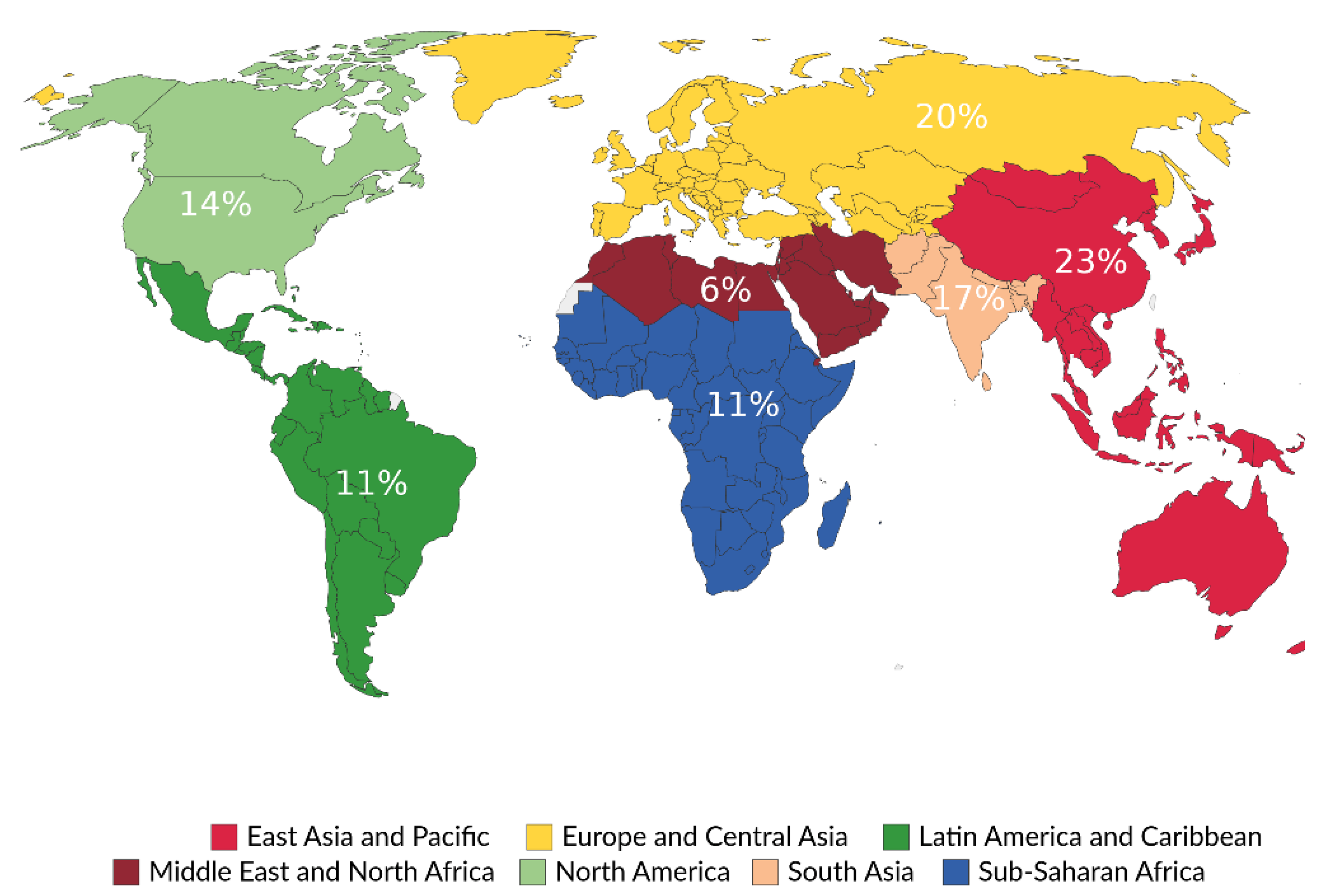


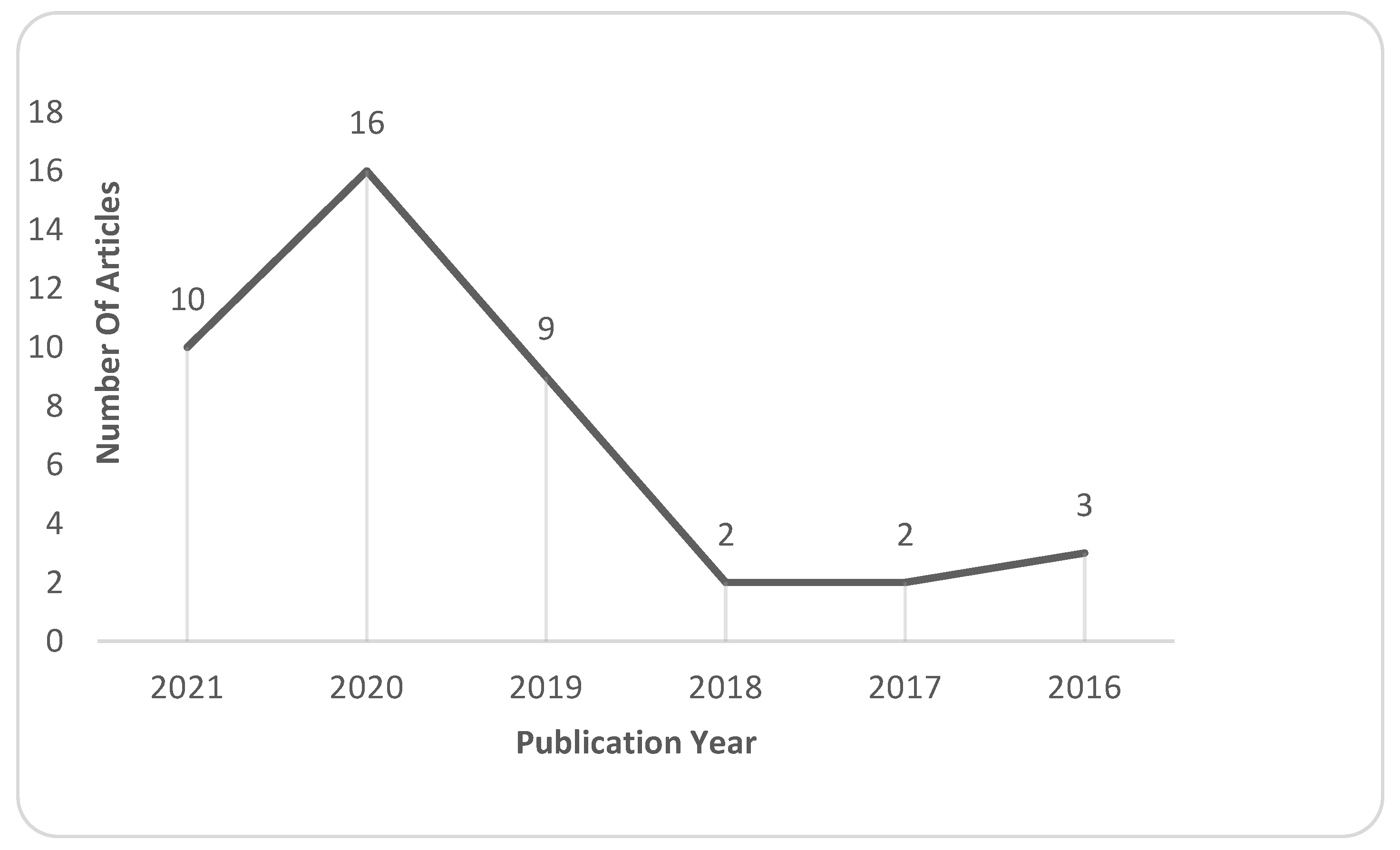
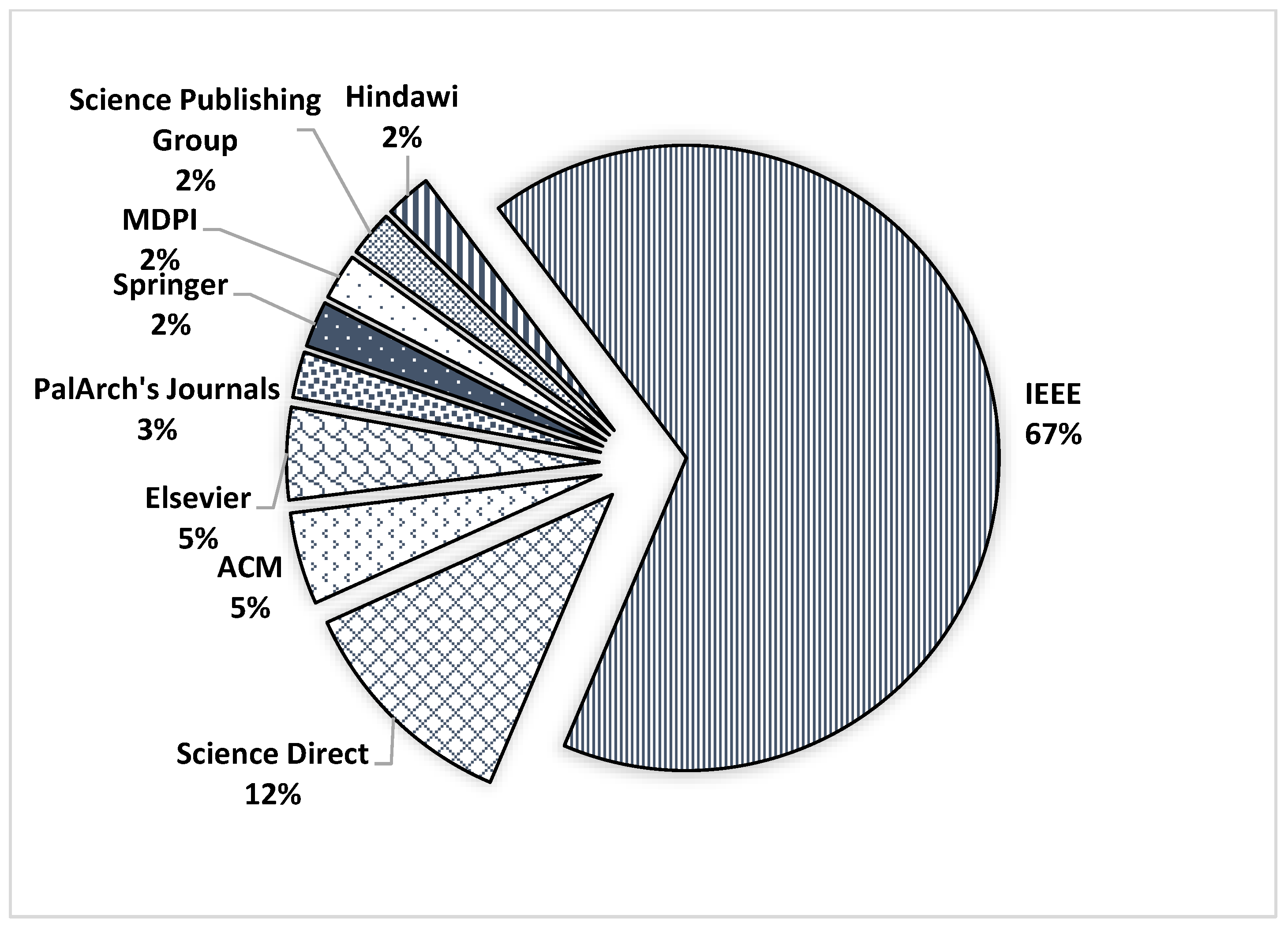


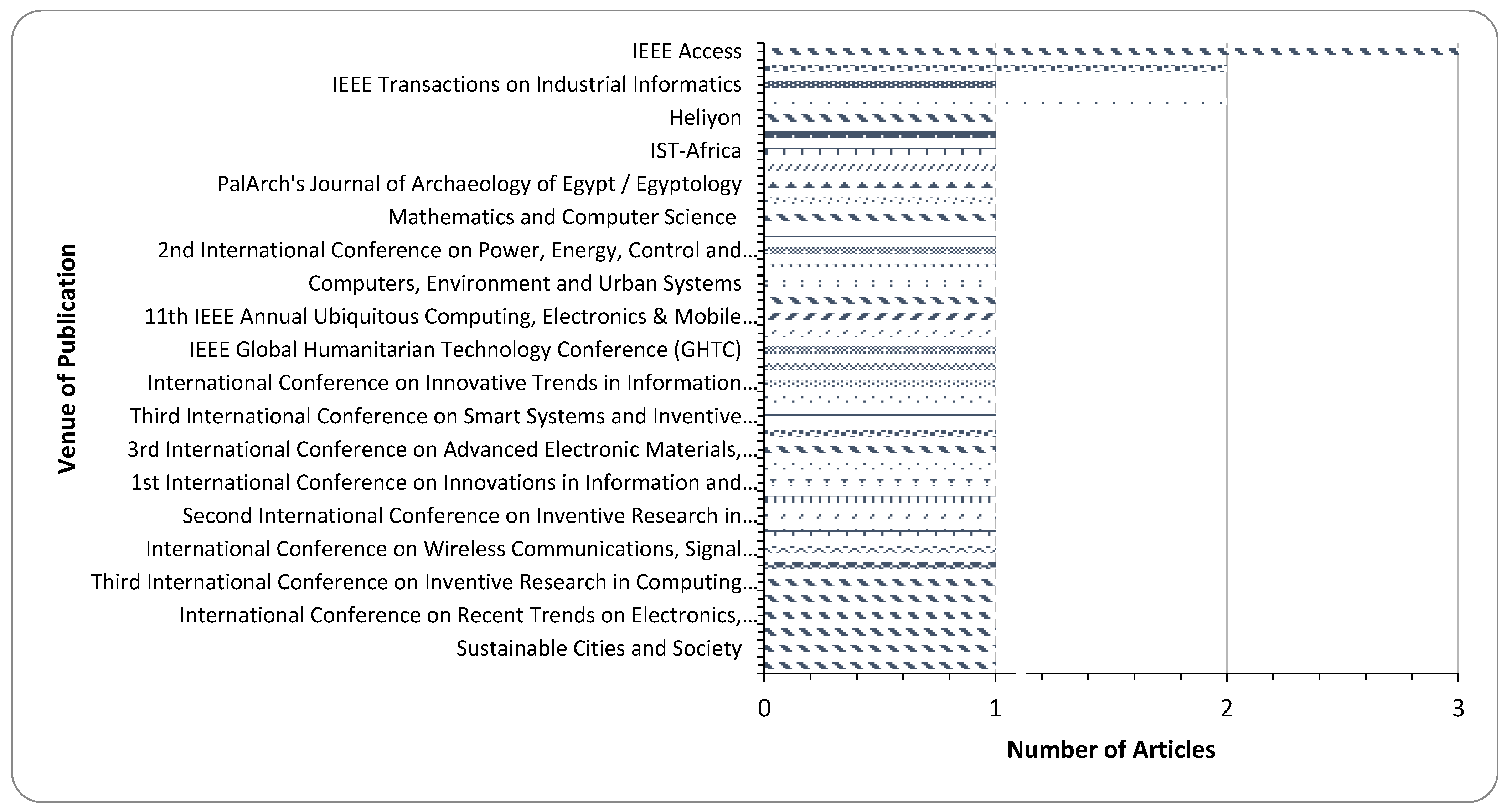


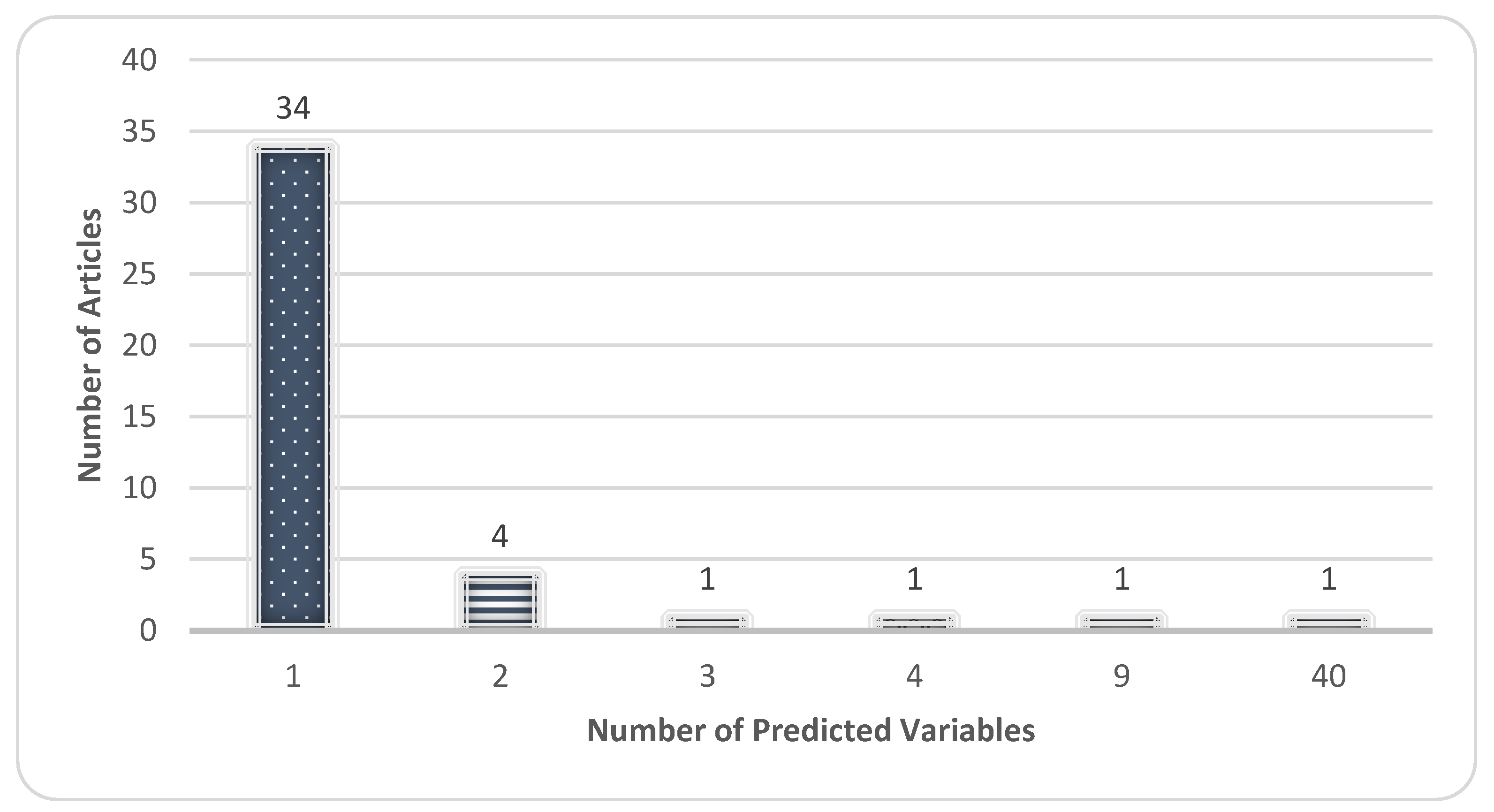


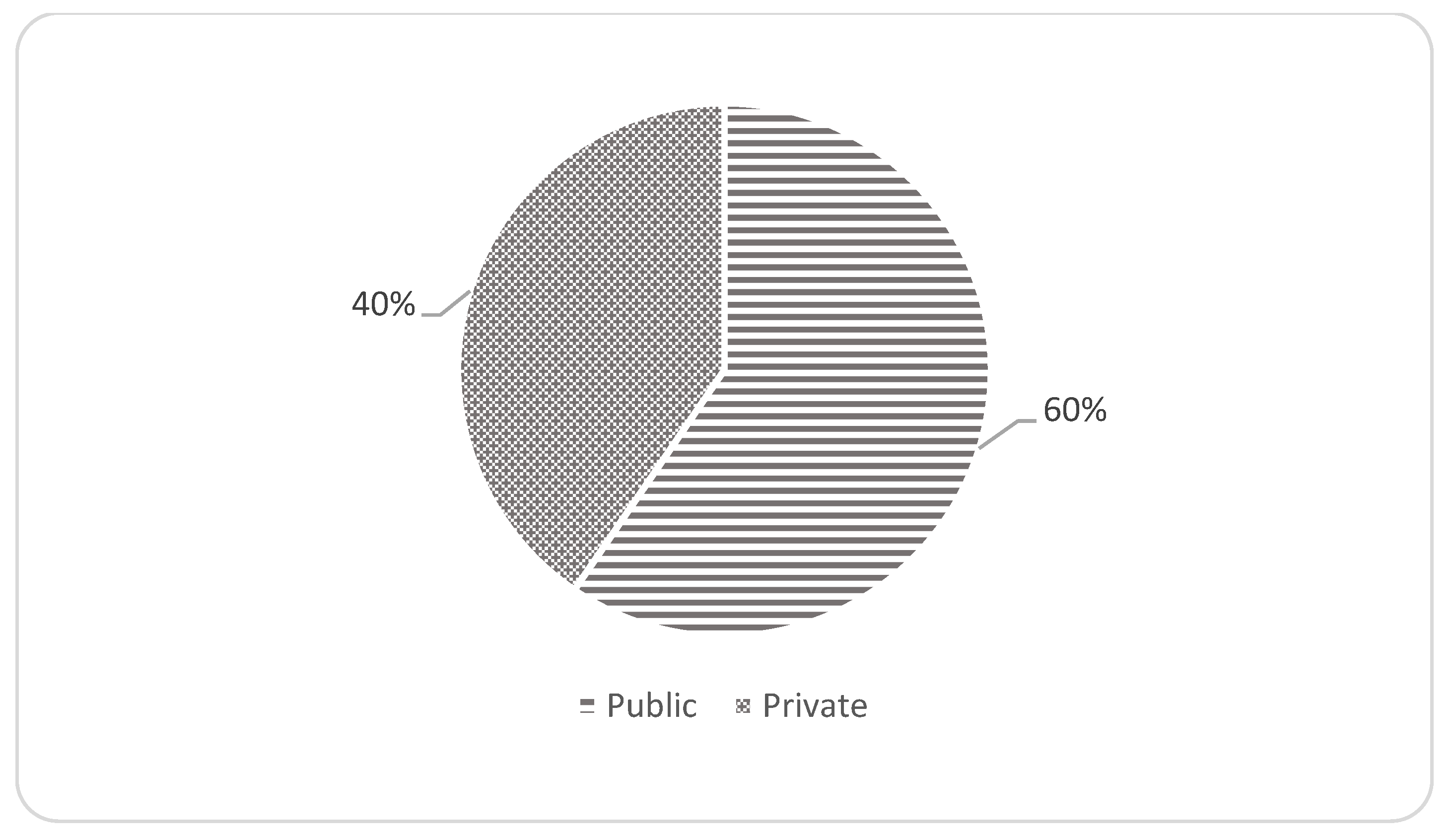

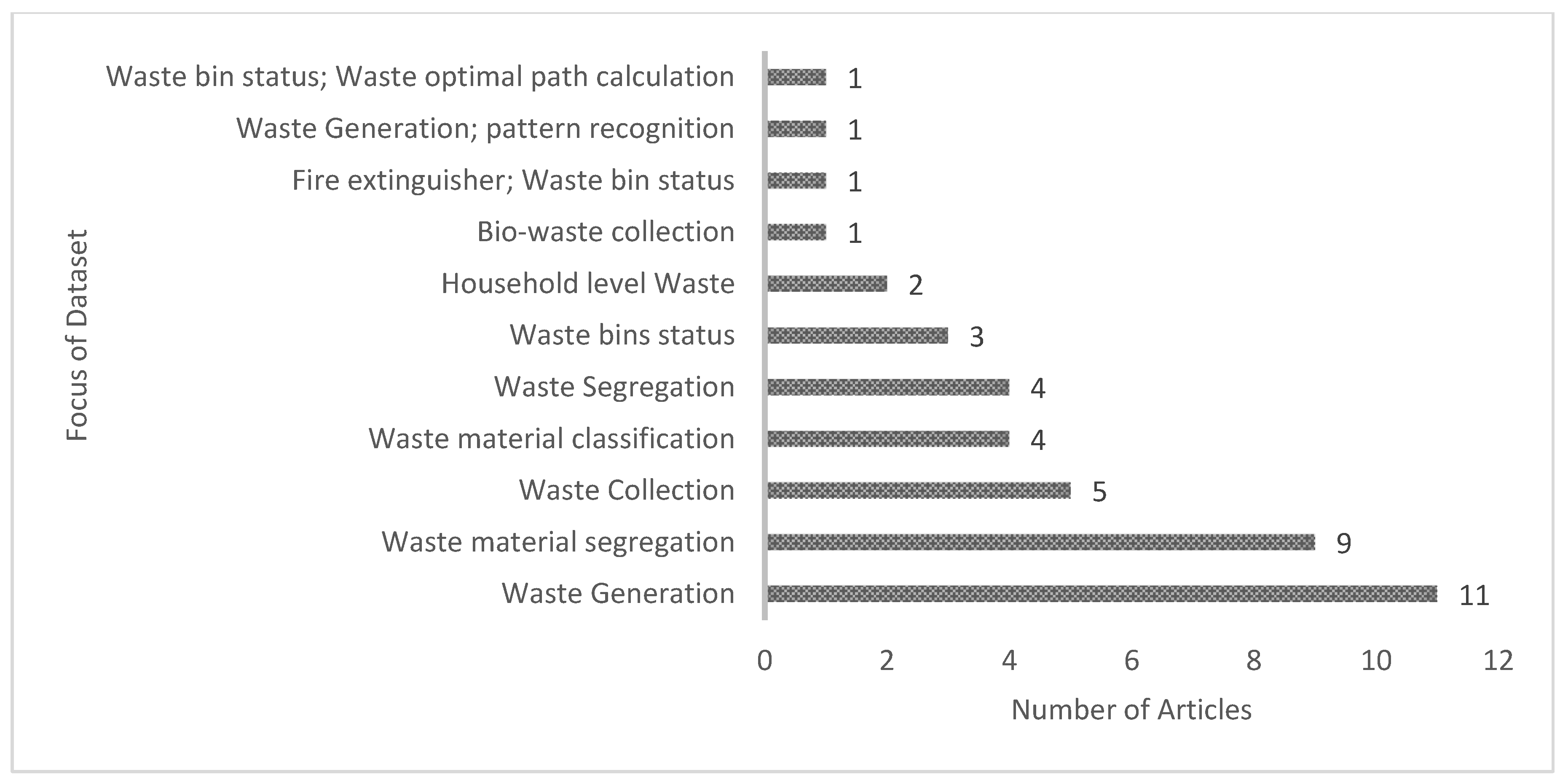
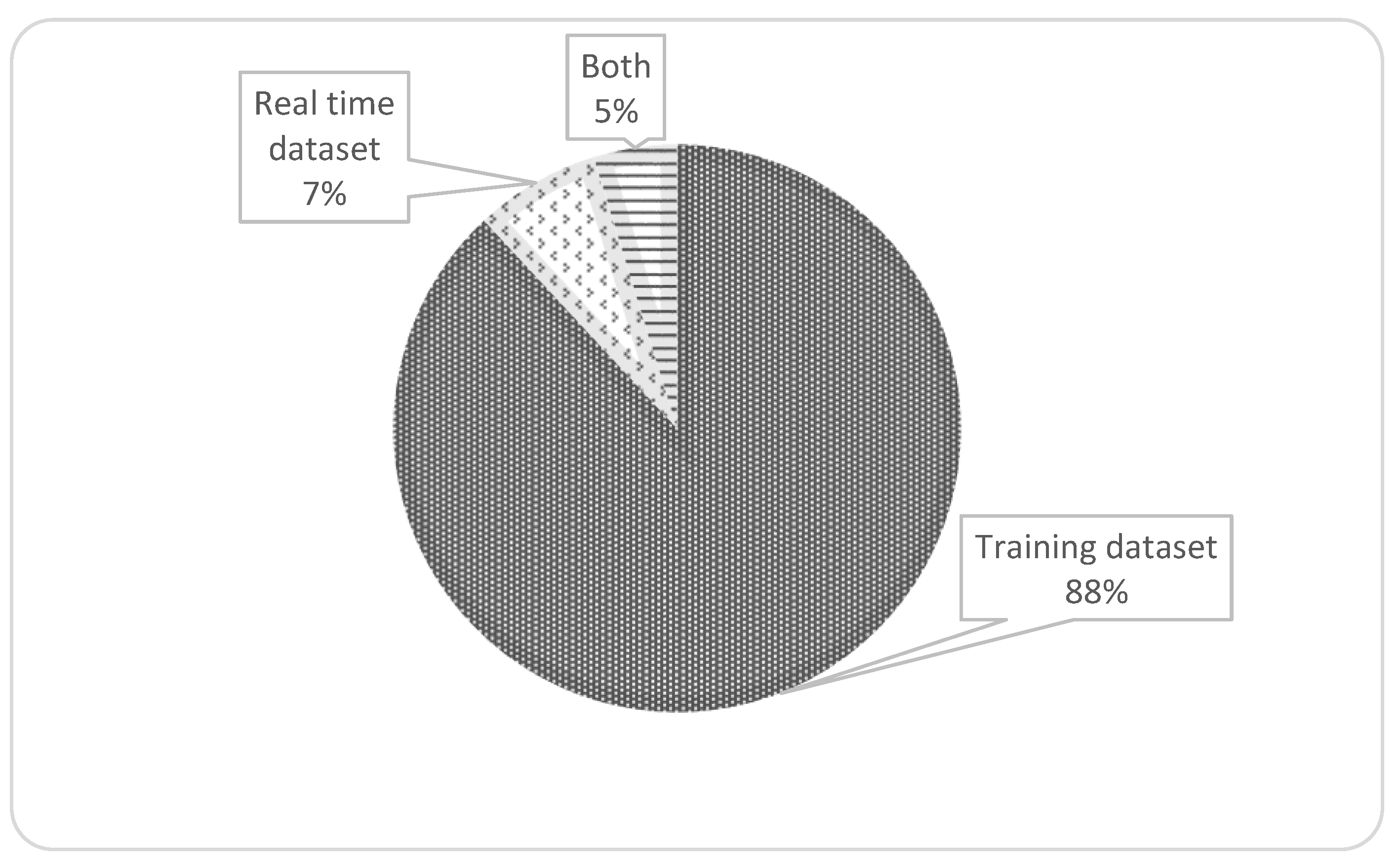
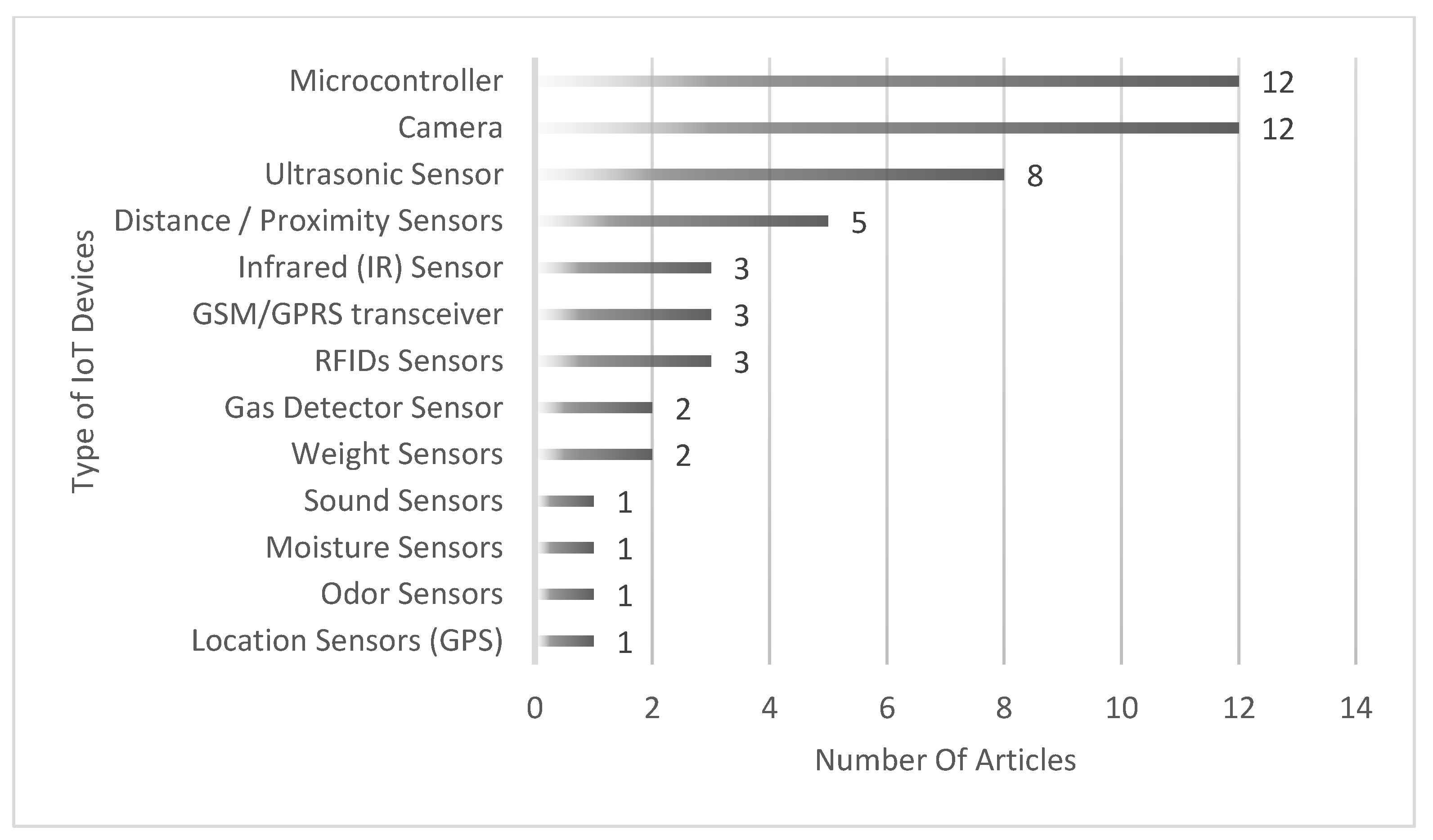

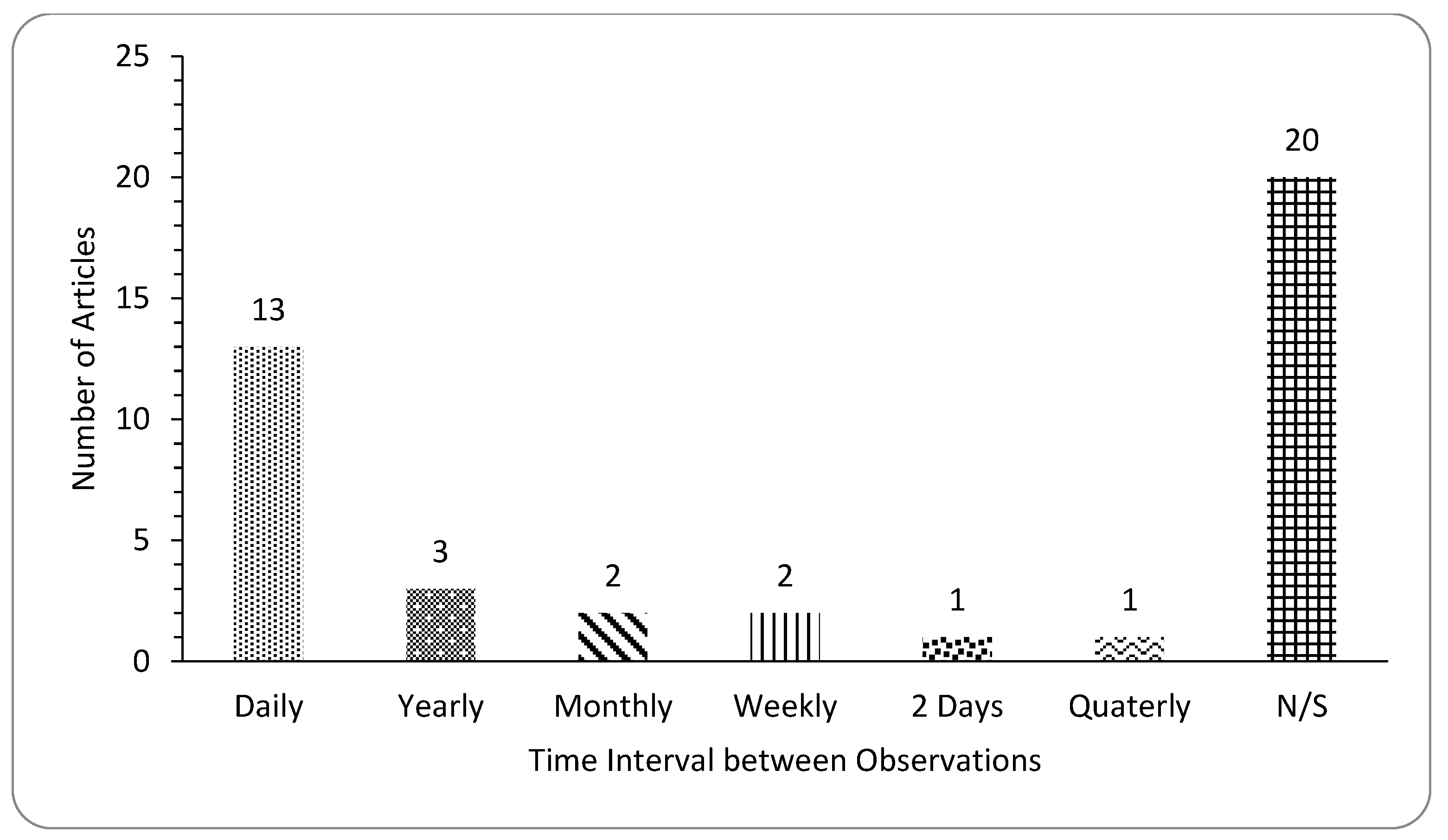

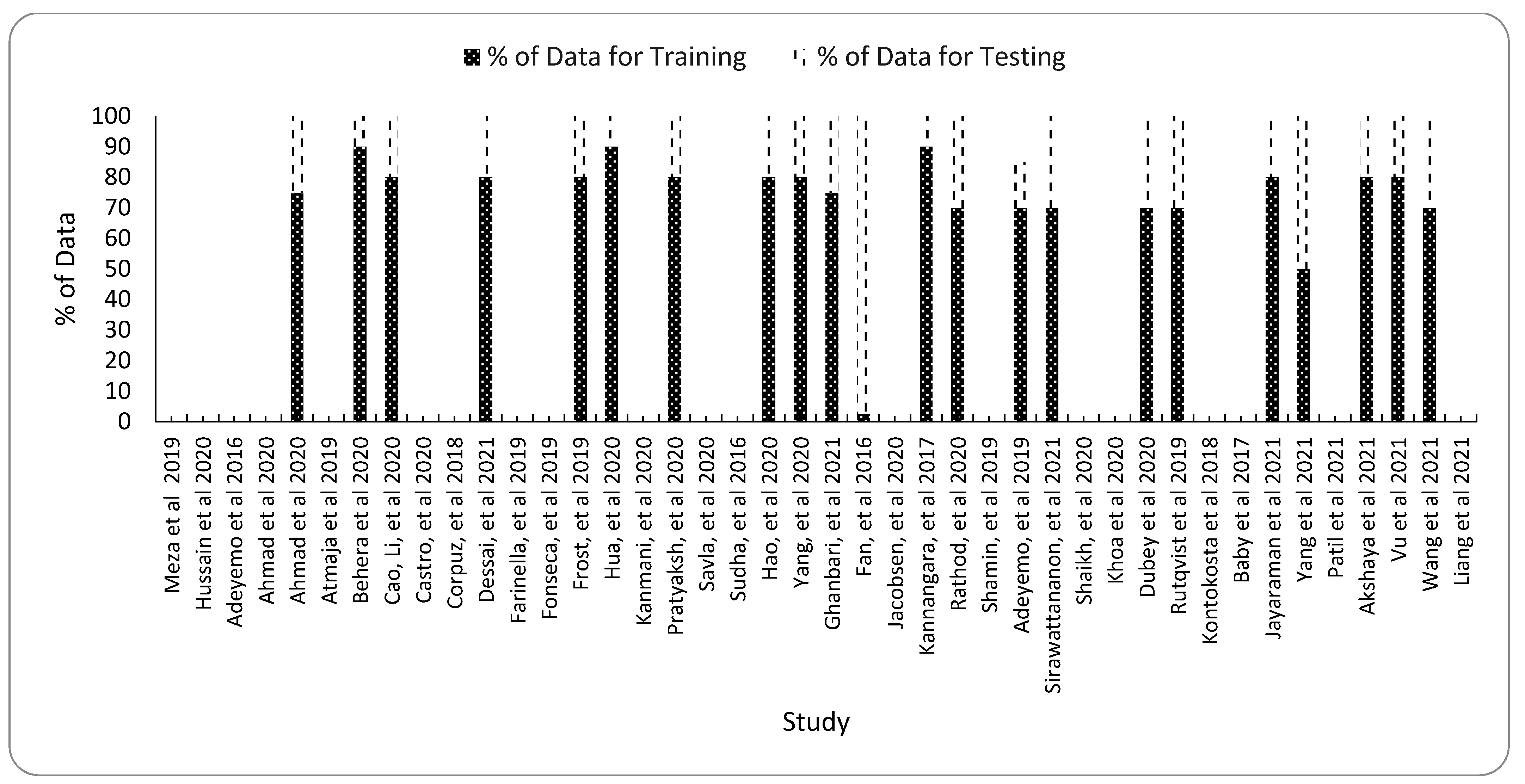
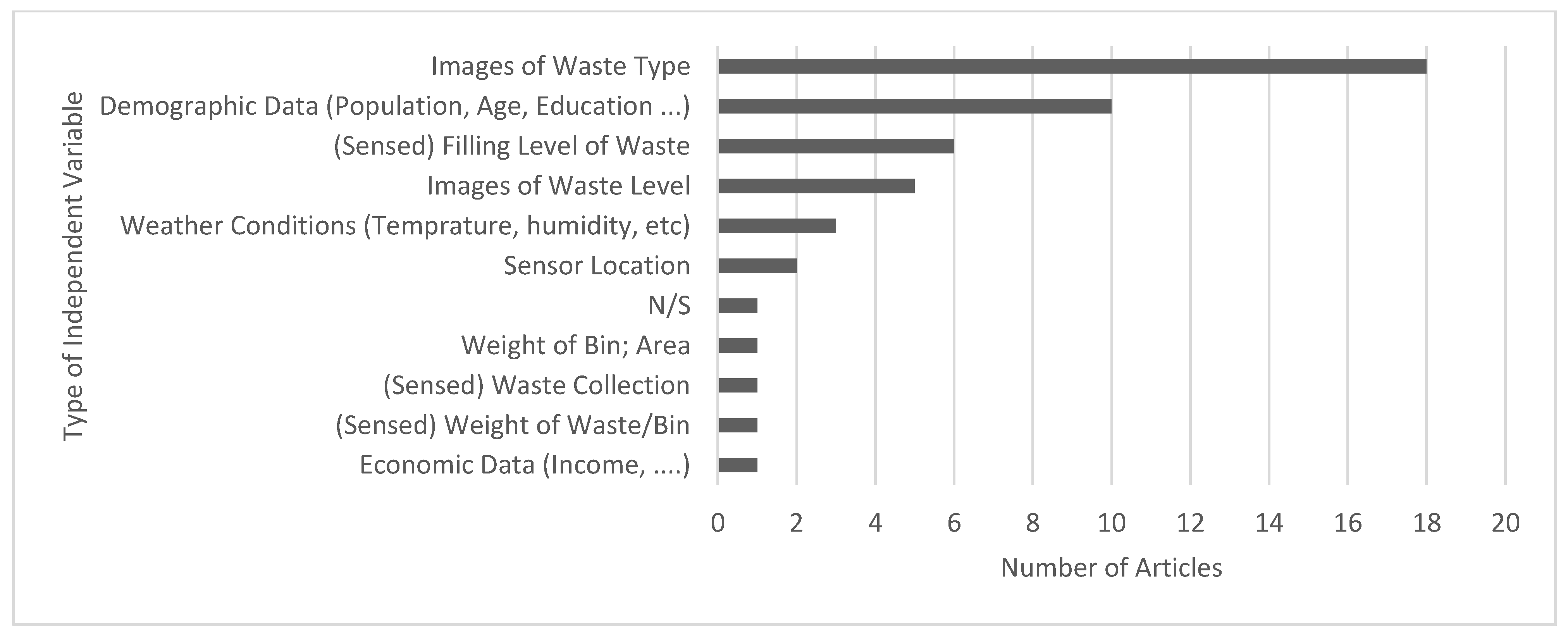

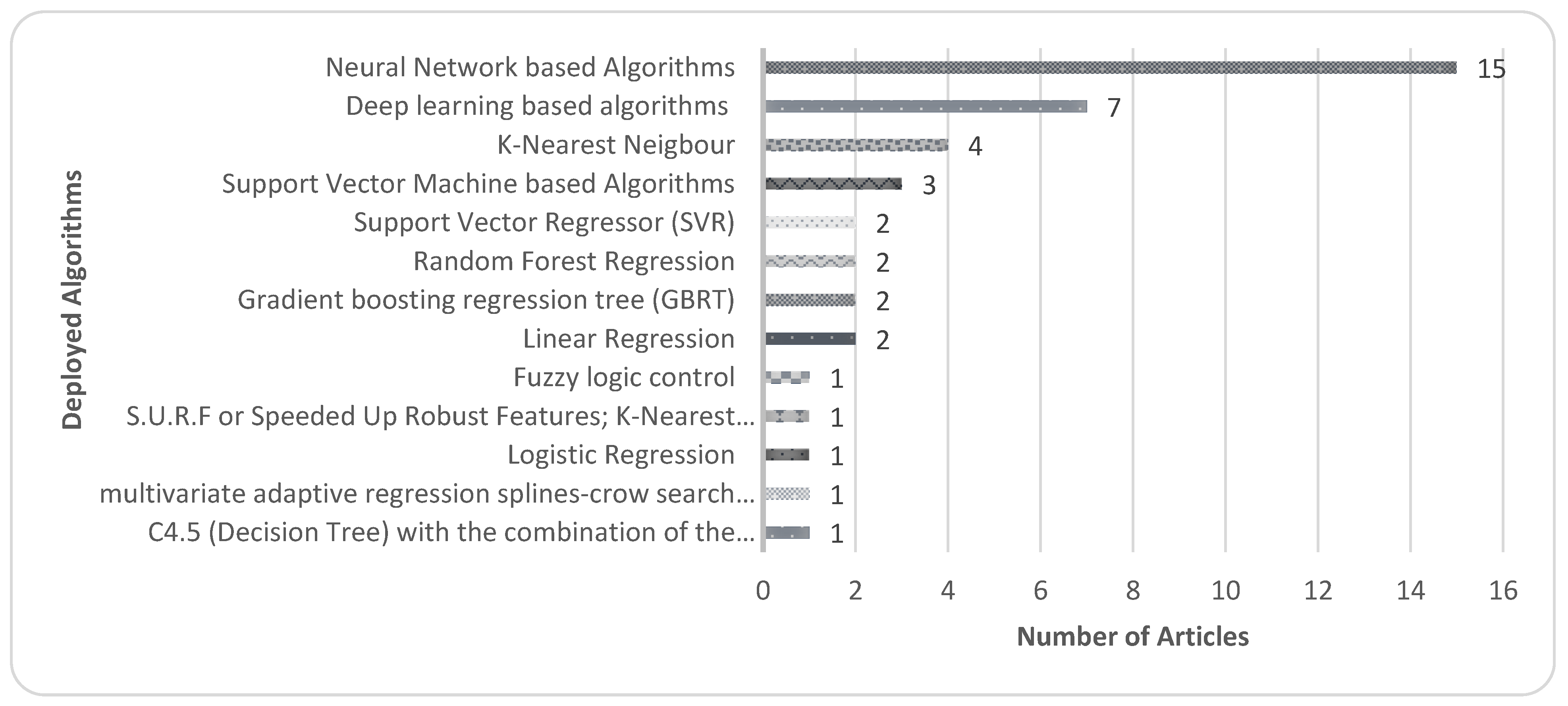


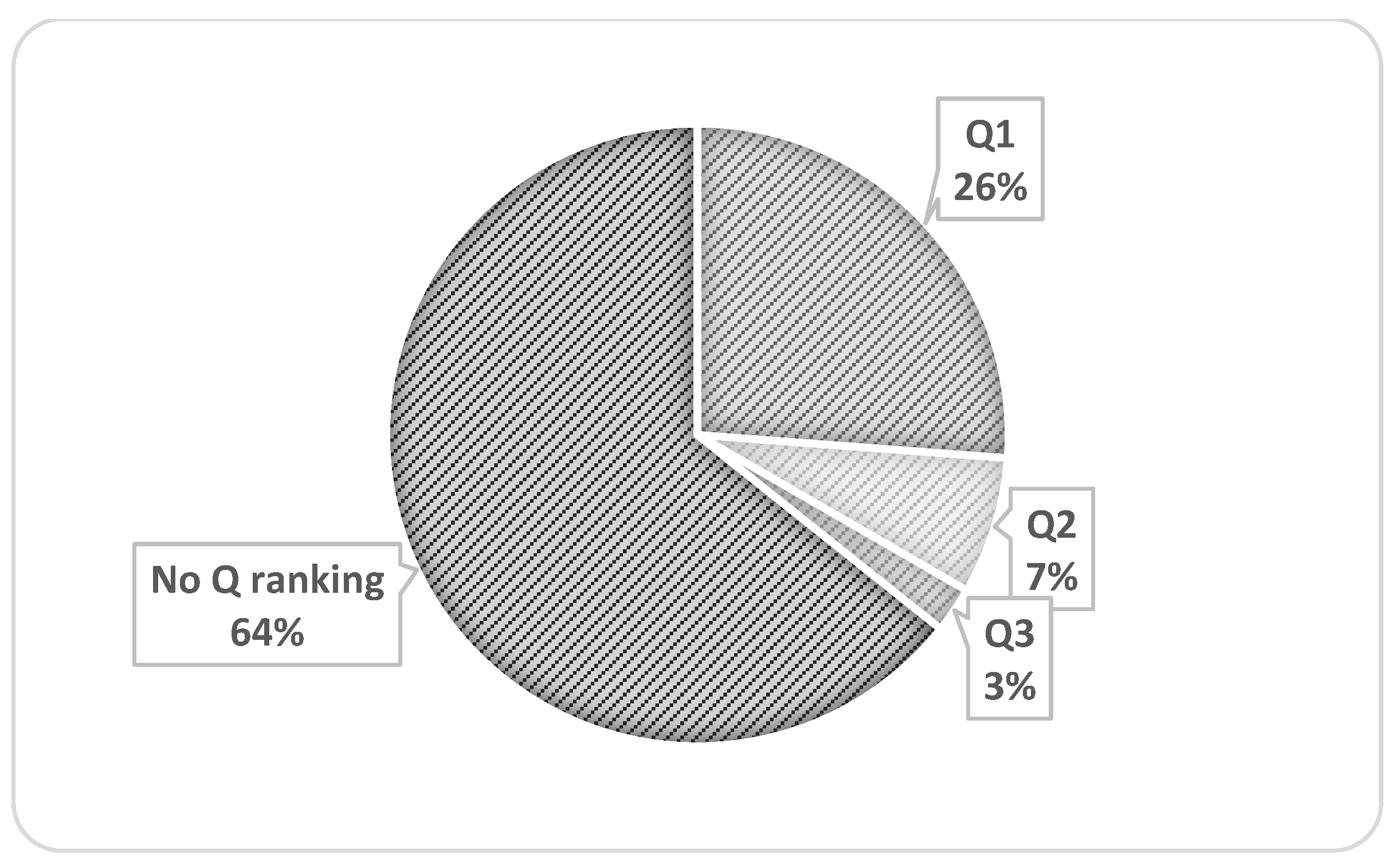
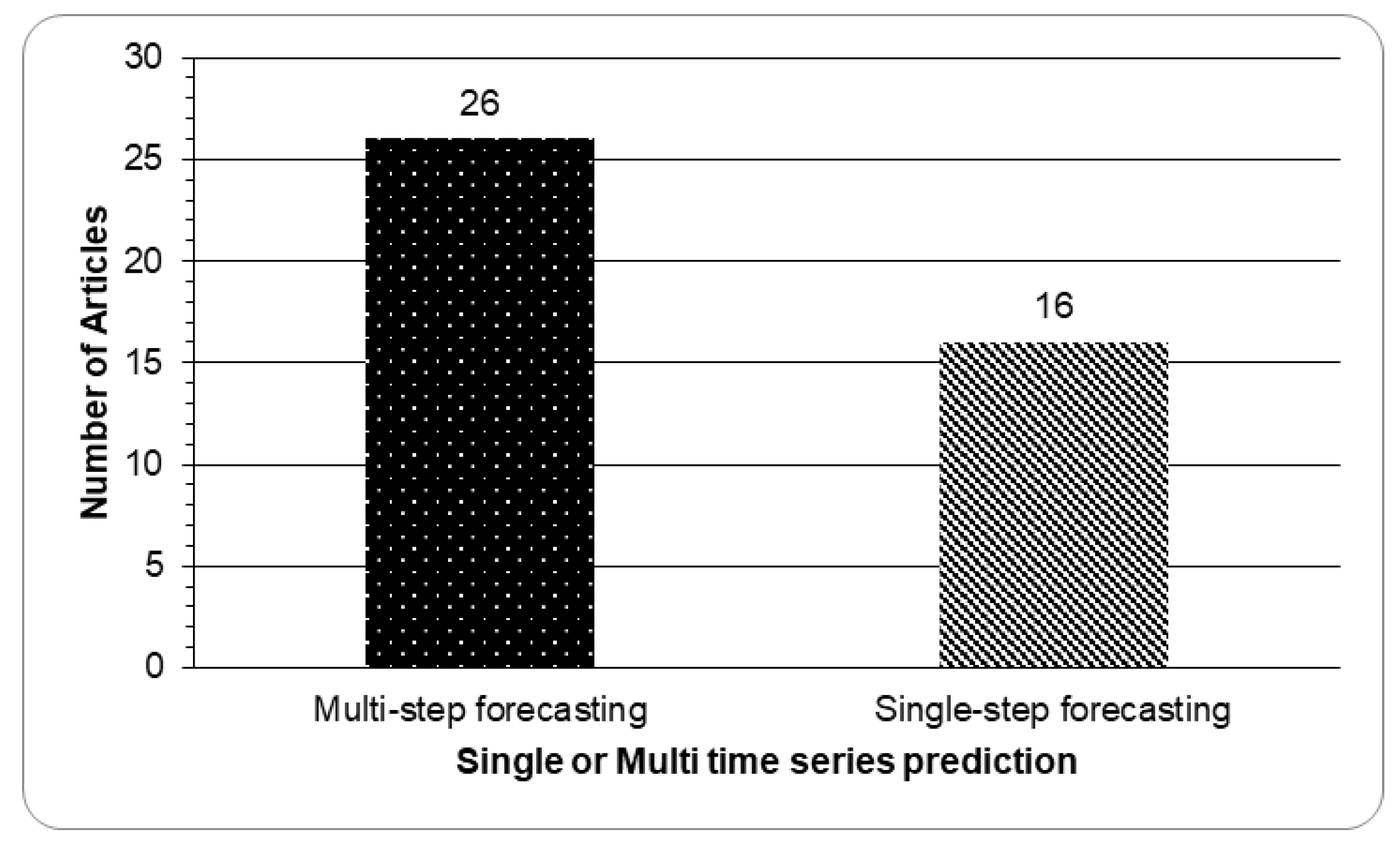
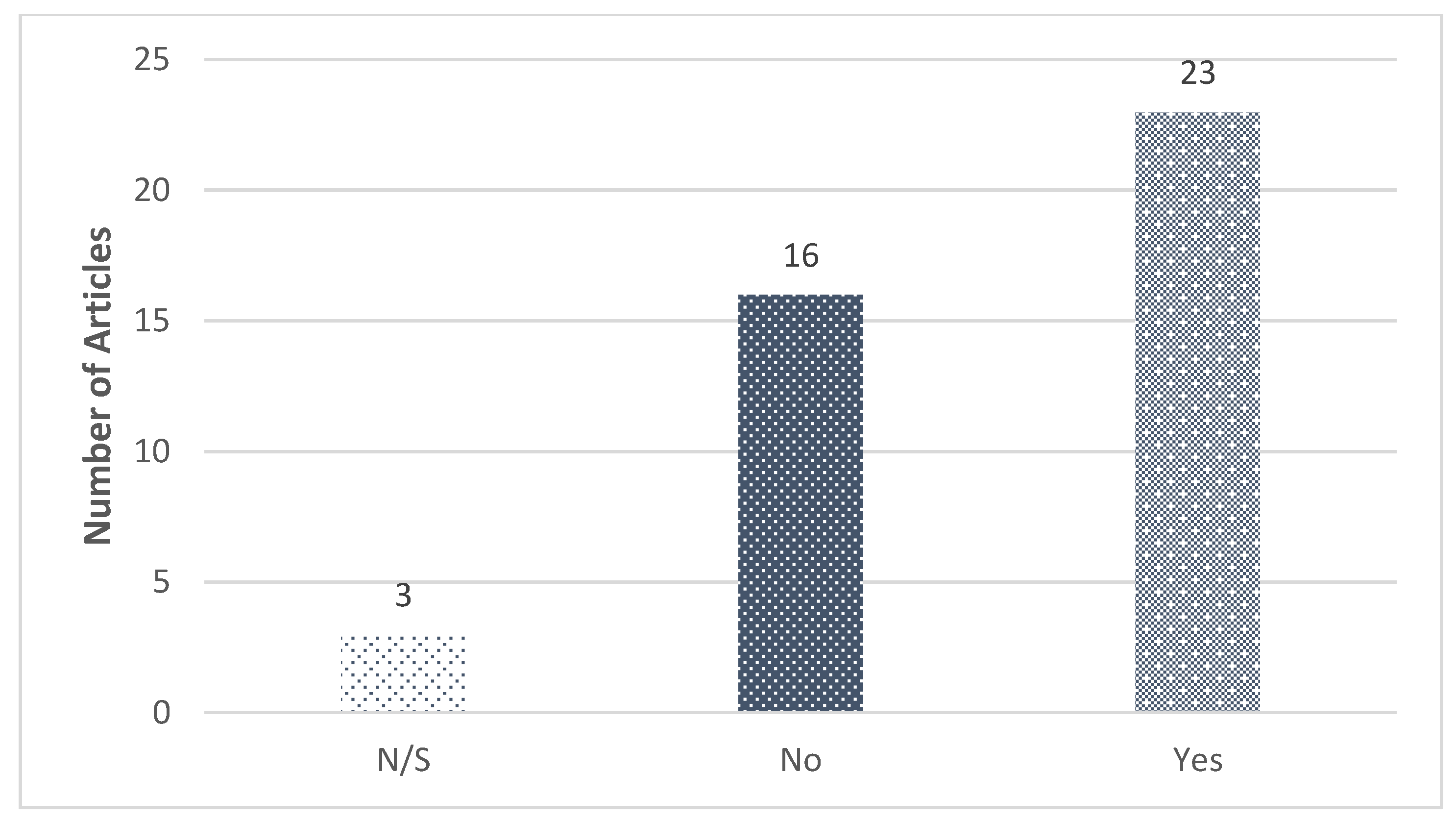
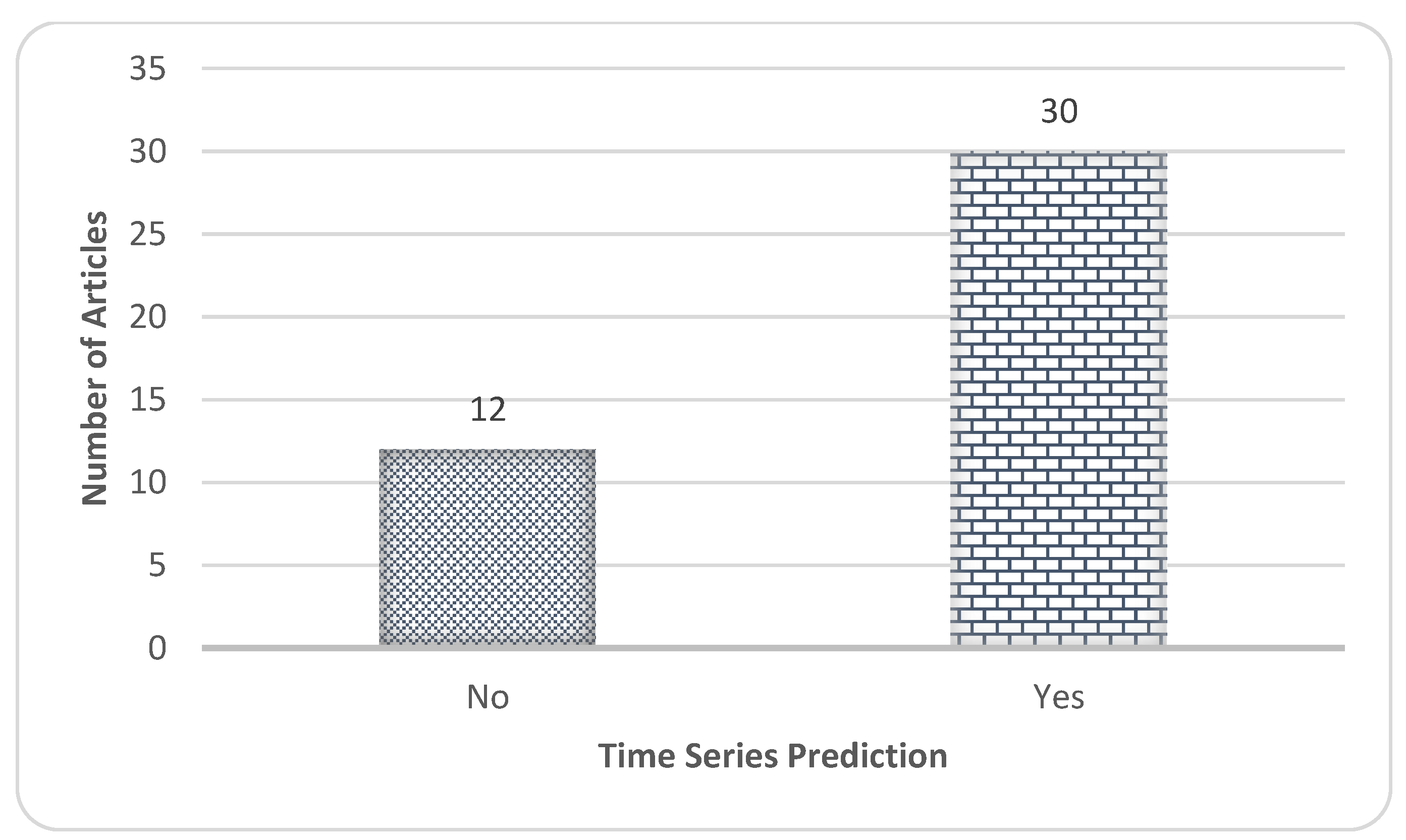
| REF | Year published | Survey type | Publisher | Venue (J/C) | Years covered | Papers reviewed | Quality Assessment | Focus of Survey | Machine Learning | Research Issues | Strengths | Weaknesses |
|---|---|---|---|---|---|---|---|---|---|---|---|---|
| [42] | 2020 | S | Elsevier | J | 2004–2019 | 85 | Y | AI applications in waste management | AI applications | Y | (+) This review highlights the importance and needs for adopting AI techniques in the SWM | (−) AI techniques depend on secondary data to train and adapt themself in such cases to successfully run this model. The need for reliable datasets |
| [43] | 2018 | S | IEEE | C | 2016–2017 | 10 | N | Prototype-based technology adoption in SWM | N | Y | (+) Describes the importance and usage of low-cost sensors in SWM | (−) No focus on the usage of machine-learning techniques |
| [44] | 2016 | LR | Elsevier | J | 2010–2013 | 87 | Y | Focuses on the absence of planning and infrastructure for the disposal of solid waste | N | Y | (+) Discusses decision support systems (DSSs) theories to assist authorities in complying with SWM regulations | (−) Mainly focus on the current in-hand issues and their management while little focus on future scenarios is considered |
| [45] | 2017 | S | IEEE | J | 2003–2015 | 32 | Y | Focuses on intelligent waste collection (transportation) using IOT sensors | N | Y | (+) This paper mainly categorizes SWM into three categories and focuses on improving the waste collection process | (−) This survey is restricted to a single city (St. Petersburg, Russia) and emphasis on the routing problem of waste collection |
| [20] | 2018 | LR | MDPI | J | 2014–2018 | 15 | Y | Focuses on the solid waste categorization based on its material and also focuses on describing the technical architecture of the different layers in IoT sensors/microprocessor | N | Y | (+) This review contributes to categorizing solid waste into different material levels and deeply describes the architecture of the IoT sensors | (−) Too many technical details are provided in terms of IoT sensors architecture rather than planning and its usage |
| [11] | 2018 | LR | Elsevier | J | 2008–2017 | 17 | N | Focuses on product’s life cycle and introduces a new business model in the process of product life cycle | N | Y | This paper introduces a sharing economy that enables citizens to declare their possession of the product as either supply or demand through an online portal, which helps the SWM to foresee the waste generation rate | This new sharing economy model will only work when the citizens are responsible enough to provide such data, which is very hard to accomplish. |
| [46] | 2019 | LR | Elsevier | J | 2001–2019 | 85 | N | Focuses on the adoption of robotics technology in SWM | N | Y | This paper focuses on the robotics-based sorting systems in SWM that will reduce human involvement in a very efficient, timely way | The proposed robotics technology is very costly and also requires a lot of hardware replacement and maintenance, which is not discussed |
| [47] | 2015 | LR | Elsevier | J | 1996–2015 | 98 | Y | Focuses on ICTs and their application in SWM | N | Y | It broadly categorizes ICTs into four categories, i.e., spatial, identification, acquisition, and data communication. It also highlights SWM systems made from these the combination of these four categories | This paper highlights how ICTs and communication work in different scenarios. |
| Technology Keywords | Smart Waste Management (SWM) Keywords |
|---|---|
| Artificial Intelligence (C) | Dispose of waste |
| Machine Learning (C) | Disposal of waste |
| Deep Learning (C) | Waste disposal behavior |
| IoT Technology (O) | Waste disposal attitude |
| Robotic Technology (O) | Household refuse |
| Image Recognition/Classification (O) | Household waste disposal |
| Disposing of household waste | |
| Waste disposal practice | |
| Household | |
| Individual | |
| Citizens |
Publisher’s Note: MDPI stays neutral with regard to jurisdictional claims in published maps and institutional affiliations. |
© 2022 by the authors. Licensee MDPI, Basel, Switzerland. This article is an open access article distributed under the terms and conditions of the Creative Commons Attribution (CC BY) license (https://creativecommons.org/licenses/by/4.0/).
Share and Cite
Namoun, A.; Tufail, A.; Khan, M.Y.; Alrehaili, A.; Syed, T.A.; BenRhouma, O. Solid Waste Generation and Disposal Using Machine Learning Approaches: A Survey of Solutions and Challenges. Sustainability 2022, 14, 13578. https://doi.org/10.3390/su142013578
Namoun A, Tufail A, Khan MY, Alrehaili A, Syed TA, BenRhouma O. Solid Waste Generation and Disposal Using Machine Learning Approaches: A Survey of Solutions and Challenges. Sustainability. 2022; 14(20):13578. https://doi.org/10.3390/su142013578
Chicago/Turabian StyleNamoun, Abdallah, Ali Tufail, Muhammad Yasar Khan, Ahmed Alrehaili, Toqeer Ali Syed, and Oussama BenRhouma. 2022. "Solid Waste Generation and Disposal Using Machine Learning Approaches: A Survey of Solutions and Challenges" Sustainability 14, no. 20: 13578. https://doi.org/10.3390/su142013578
APA StyleNamoun, A., Tufail, A., Khan, M. Y., Alrehaili, A., Syed, T. A., & BenRhouma, O. (2022). Solid Waste Generation and Disposal Using Machine Learning Approaches: A Survey of Solutions and Challenges. Sustainability, 14(20), 13578. https://doi.org/10.3390/su142013578








